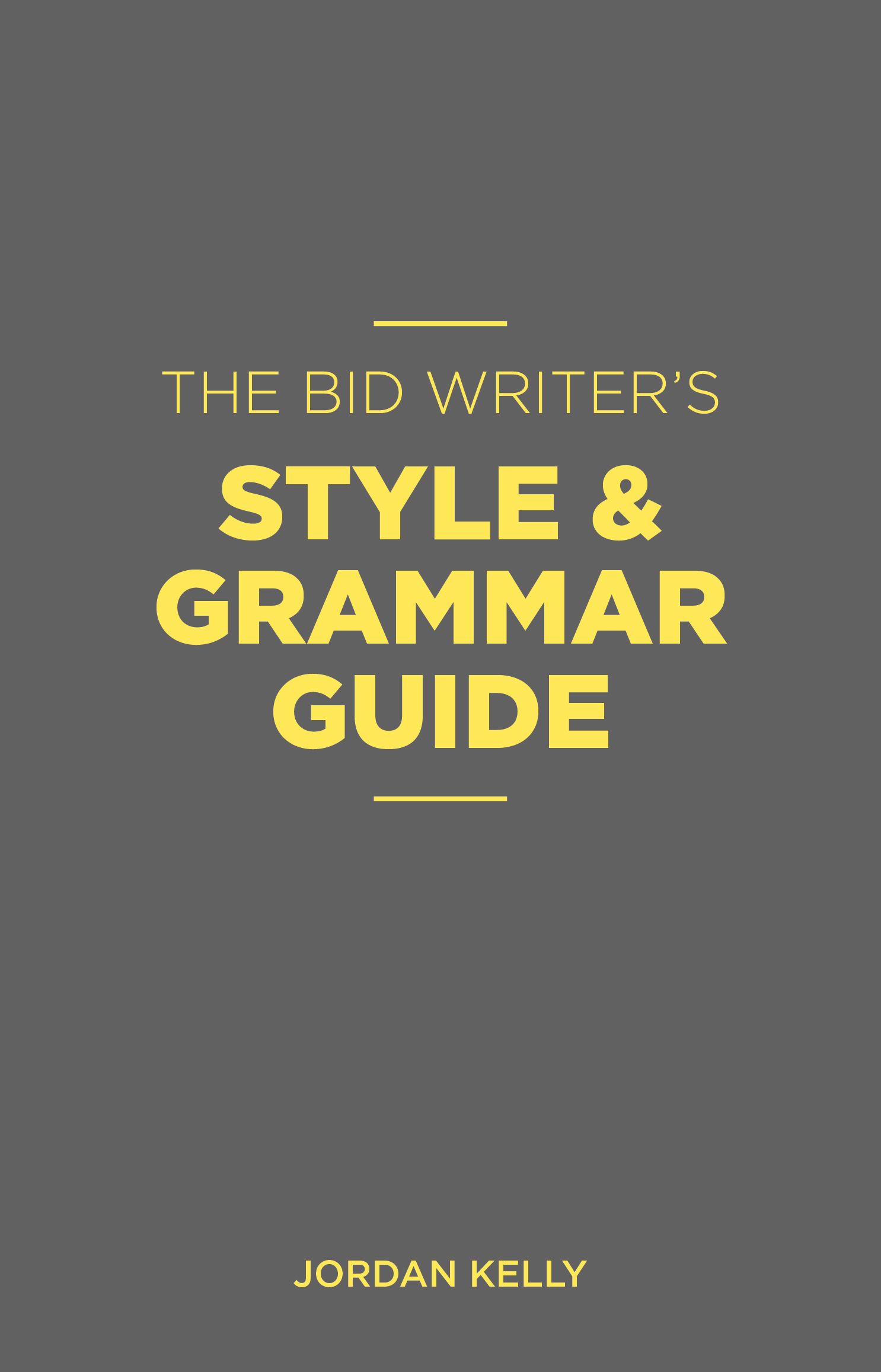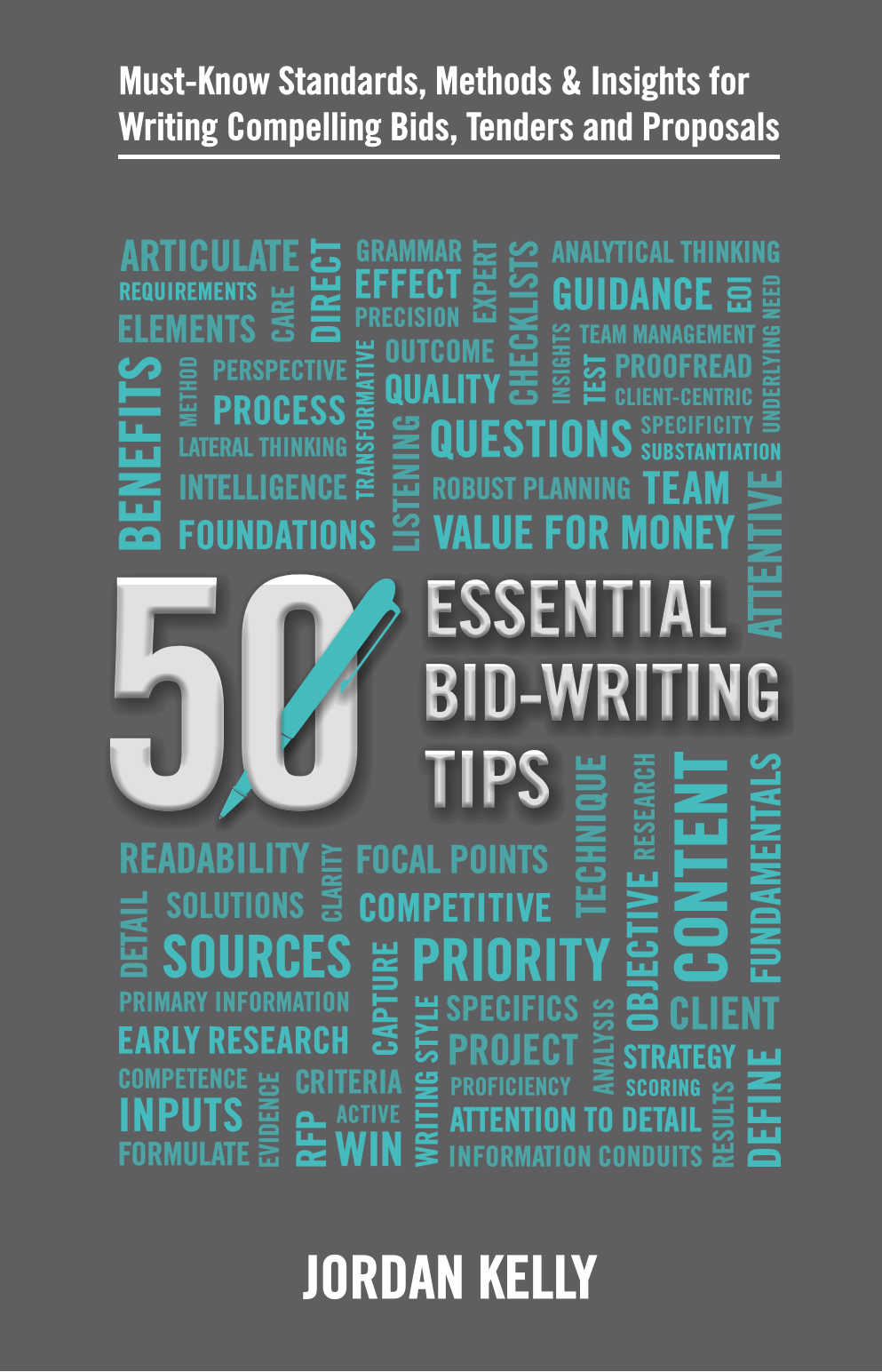CATEGORIES:

Your organisation’s credibility is either enhanced or eroded by the quality of your writing and the standards it reflects.
The Bid Writer’s Style & Grammar Guide is far more than just a reference manual on all things grammar. It also provides tuition on many other basics of effective bid-writing, including on strategy, as the essential foundation of a high-quality proposal document.
Exercised diligently, these core principles and practices will see you produce not only grammatically correct, but highly readable and compelling, submissions.
Readers will benefit substantially from a wide range of topics – from writing with style and clarity, avoiding “fashion-speak”, and achieving believability through substance and substantiation, to ensuring your writing is client-focused rather than supplier-centric, benefit- as opposed to feature-oriented, and smooth and natural rather than stilted and indirect.
Also featured are sections on common grammar traps, commonly mis-spelled words, commonly confused words and terms, and sexist versus non-sexist language and terminology.
THE BID WRITER'S STYLE & GRAMMAR GUIDE
(Book)
This reference and tuition manual has been written both for the professional bid writer and for those subject matter experts contributing submission content.
While first and foremost a “style and grammar guide”, I have taken the opportunity to also provide tuition on many other aspects of effective bid-writing - including the basic principles of strategy, as the essential foundation of a high-quality proposal.
Exercised diligently, these core principles and practices will see you produce not only grammatically correct and highly readable, but also strategic and compelling, submissions.
50 ESSENTIAL BID-WRITING TIPS
Must-Know Standards, Methods & Insights for Writing Compelling Bids, Tenders & Proposals

(Book)
Intentional successful bids are guided by a strategy that is well-researched, customer-centric / client-centric, substance-based, savvily-formulated, and documented in detail.
It is the bid writer's job to ensure that strategy (the primary – but not exclusive – role of which is to address all known selection criteria) is then articulated clearly, consistently and compellingly throughout every section of the proposal.


